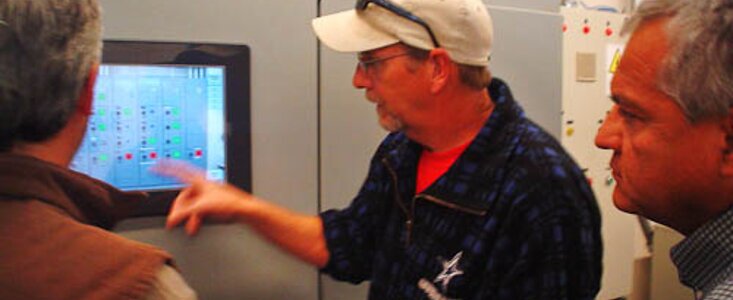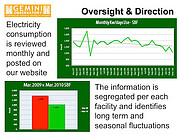Minimizing Gemini’s Environmental Impact
27 Abril 2010
Gemini Observatory aims to be one of the most energy efficient astronomical facilities, with the highest standards of environmental protection. Since it first encouraged, in 2008, staff proposals to reduce its carbon footprint, the organization has formalized its energy planning efforts and developed many initiatives to reduce energy consumption and help the Observatory “tread more lightly on the Earth.”
There are many challenges to creating an effective, organization-wide energy-reduction program for two of the world’s largest telescopes, based in two countries, on two continents. Differing energy infrastructures, government systems, cultural norms, and business resources have all required us to remain flexible and creative as we work to reduce, re-use, and recycle wherever possible, but we have already chalked up several successes and a few of the highlights from this program follow:
Electricity
Chile enjoys relatively low electricity costs, but Hawaii’s are the highest in the United States. In February 2008, for example, the cost of electricity in Hawai‘i soared to a frightening $.44/kilowatt-hour (it is currently $.29, and heading up again).
Many people don’t realize how much electricity we use, or why air conditioning is so vital to an observatory’s operation. Gemini’s two mountaintop telescope facilities use 70 to 80 percent of our total electricity, simply to keep the temperature inside each dome in equilibrium with the expected nighttime outside air temperature. Air currents caused by warm air inside the dome can ruin the observing conditions, and also damage instruments/optics through thermal changes and condensation.
The remaining 20 to 30 percent of our electricity is used in the offices at the base facilities to run heating, ventilation and air conditioning systems, lights, instruments and computer systems.
Replacing older chillers and AC units with new and more energy-efficient systems, changing the methods by which the domes are cooled, installing programmable thermostats and motion-sensing light switches and our use of a distributed power management system in our computer networks have all contributed to important reductions in our electricity consumption, both in the offices and at the telescopes. We are currently reviewing plans for installing photovoltaic panels on our facilities in Hawai’i during 2010 that would save several tens of thousands of dollars per year and reduce our exposure to future energy price increases.






